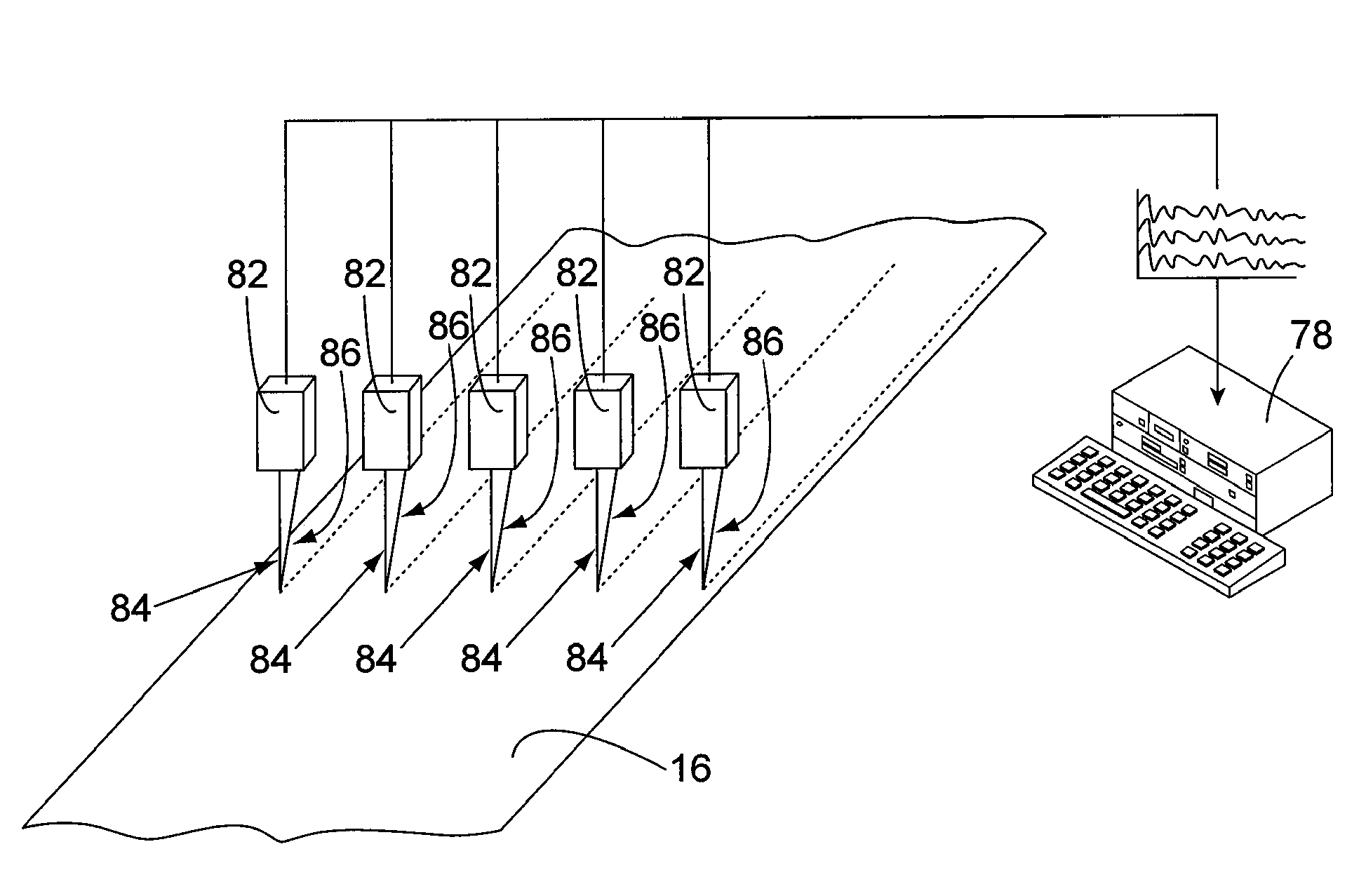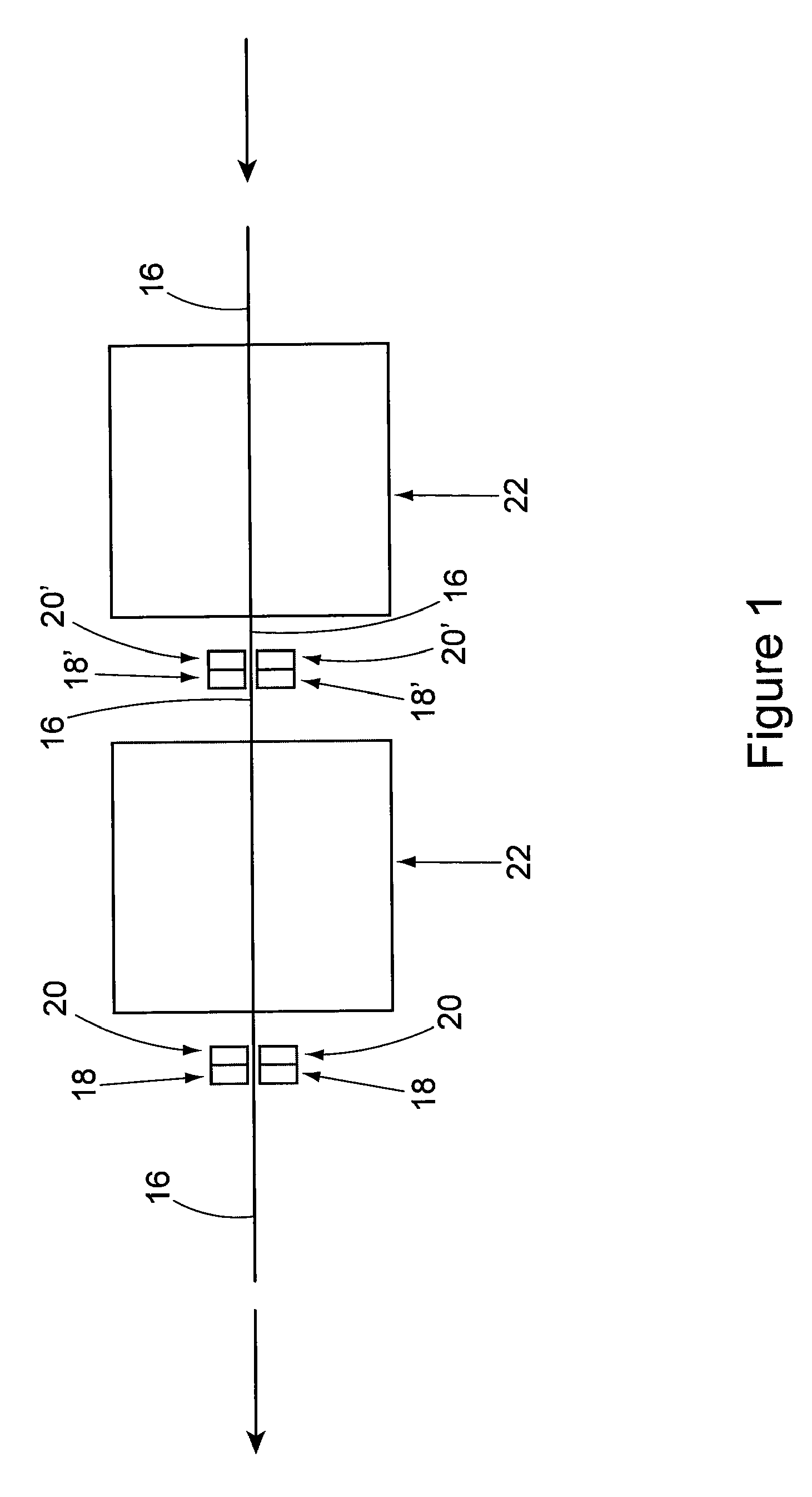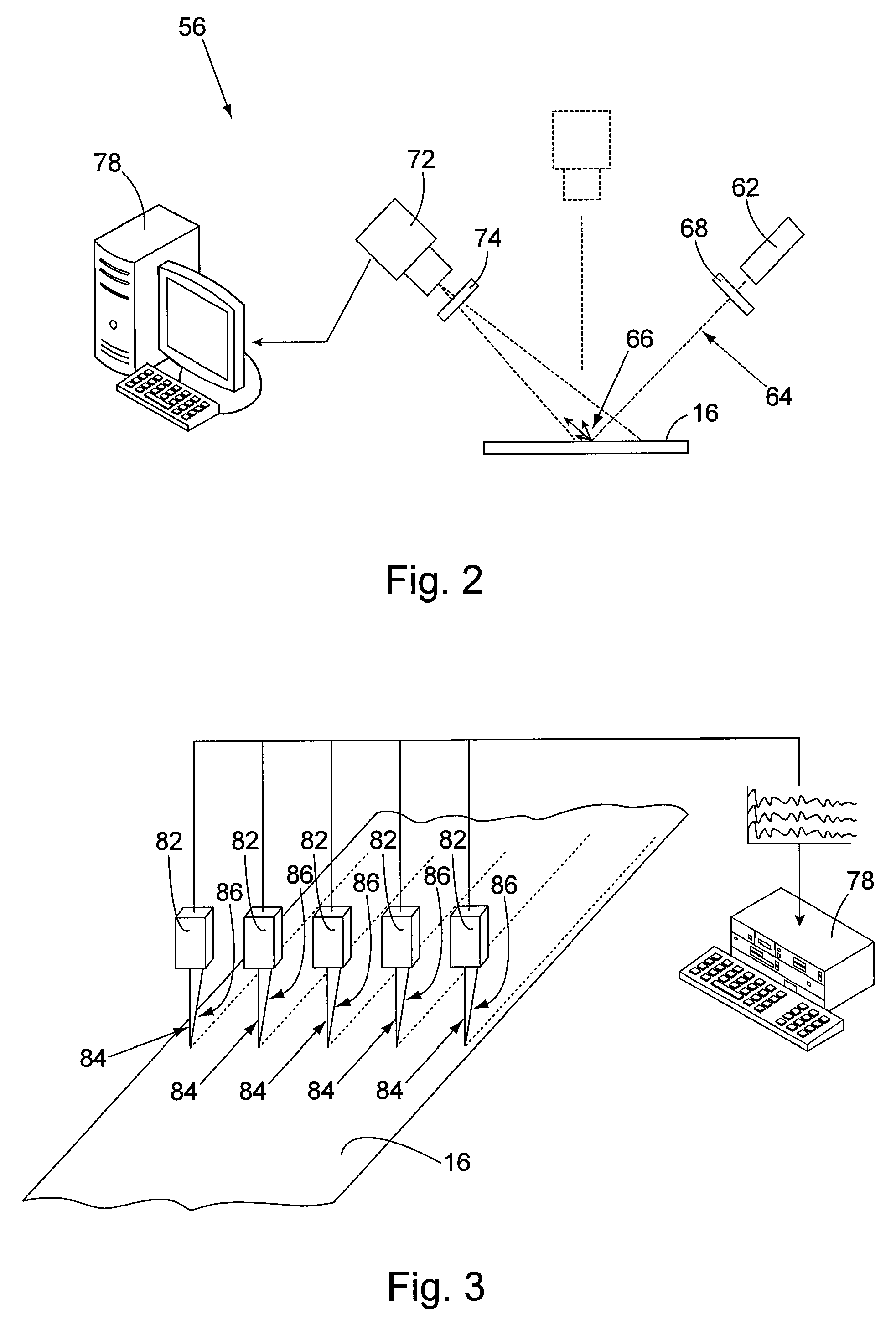Sheet Metal Oxide Detector
a metal oxide and detector technology, applied in the field of sheet metal oxide detectors, can solve the problems of loss of productivity, overpicking of materials, and scale still remaining on the surface of strips
- Summary
- Abstract
- Description
- Claims
- Application Information
AI Technical Summary
Benefits of technology
Problems solved by technology
Method used
Image
Examples
Embodiment Construction
[0025]FIG. 1 shows a schematic representation of a metal processing line in which the apparatus of the invention is used. The processing line of FIG. 1 receives a length of sheet metal and removes scale from the opposite surfaces of the length of sheet metal as the length of sheet metal passes through the processing line. The apparatus of the invention, as will be explained, may be employed in a processing line such as that of FIG. 1 to detect any residual scale remaining on the surfaces of the descaled sheet metal. The processing line shown in FIG. 1 is only one example of an environment in which the apparatus of the invention may be used. Therefore, the processing line of FIG. 1 should not be interpreted as the only environment in which the apparatus may be used. FIG. 1 basically represents a strip of metal 16 that is moving relative to the oxide detector apparatus 18 of the invention, which includes a surface roughness detector or sensor 20, whereby the apparatus 18 detects any r...
PUM
| Property | Measurement | Unit |
|---|---|---|
| angle | aaaaa | aaaaa |
| area | aaaaa | aaaaa |
| length | aaaaa | aaaaa |
Abstract
Description
Claims
Application Information
 Login to View More
Login to View More - R&D
- Intellectual Property
- Life Sciences
- Materials
- Tech Scout
- Unparalleled Data Quality
- Higher Quality Content
- 60% Fewer Hallucinations
Browse by: Latest US Patents, China's latest patents, Technical Efficacy Thesaurus, Application Domain, Technology Topic, Popular Technical Reports.
© 2025 PatSnap. All rights reserved.Legal|Privacy policy|Modern Slavery Act Transparency Statement|Sitemap|About US| Contact US: help@patsnap.com



